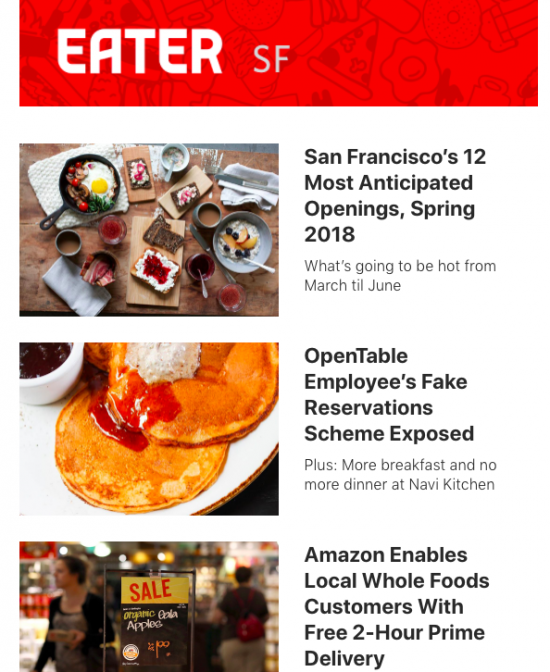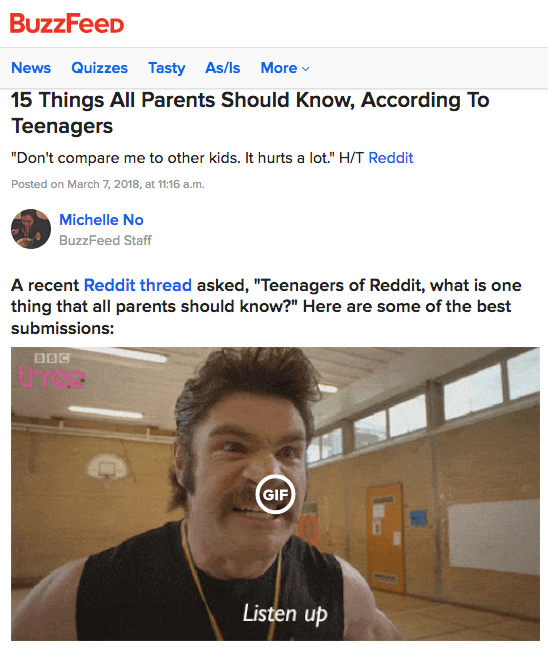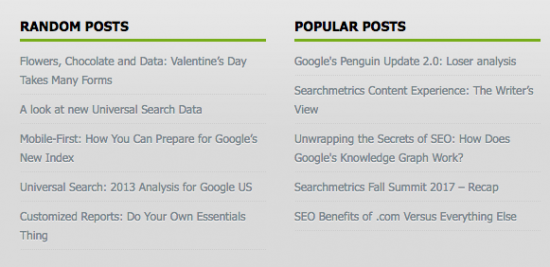If you’ve spent any amount of time in the digital marketing jungle, you’ve heard that “content is the backbone of digital marketing.” That puts a lot of pressure on businesses to churn out loads of copy to improve online visibility. Creating fresh content is a lot of work, so curation can be a quick fix to ease labor and cost. In this week’s Unwrapping the Secrets of SEO we take a look at ways to leverage your worth as a thought leader by using SEO to surface your own content.
Understanding the Art of Content Curation
A content curator is exactly like an art museum curator, only the museum we’re working in is the internet and the art is information produced for internet users. A curator gathers pieces of content on a particular topic from other sources and publishes it as a collection.
Pinterest is a great example of how powerful content curation can be. Pinterest is a basic bookmarking platform, but it’s evolved into the ultimate content curation machine: users follow other users who don’t even create their own content — they’re being followed because they know how to pick out the right holiday recipes, fall fashion or cute crafts. They cherry-pick the best information from the most trusted sources and put it in one spot for people who don’t necessarily have time to sort through SERPs to discover the right material on their own.
Anne van der Meer has 126K people interested in earrings she would buy, clothes she would wear, and how she wants to decorate her home.
As with any social media platform, it’s hard to just jump in and gain followers automatically to give your content exposure, but one way to give your boards a jumpstart is by joining group boards – niche Pinterest communities – and adding pins with your own content, giving other users an entry point to your own boards. Pingroupie has a directory of various group boards of special interests to help you navigate your group board options.
Understanding the Types of Content Curation
There are many different ways to curate content. It can be published in an email newsletter to sum up an industry’s week in news or a blog post that packages a roundup of news regarding one particular topic.
Most email marketing software allows you to segment emails so you can tailor each curated list for each person on your list. Right now, email is a way to make certain your content is getting in front of your audience. While it’s no guarantee the recipient will read the information, because they subscribe to your email program, you know they asked for the information. With the algorithm changes on Facebook curbing organic reach for brands, and Google’s algorithm filtering internet searches, you know the people on your email list have immediate access to it. Here’s what food and restaurant publisher Eater SF’s weekly email looks like:
This is a sort of ICYMI email — collecting all of the articles published in a week in case you didn’t get a chance to get to the website. It acts as a reminder to recipients that you’re delivering new and relevant information that they may not know about.
Listicles
Buzzfeed is the internet king of viral content. While it is putting a lot of effort into being a news publisher, it’s best known for its listicles. For the most part, Buzzfeed takes other publishers’ content and social media posts, mixes them together to create snackable, entertaining articles that get shared and re-shared on almost all social platforms. In this post, it picked some quotes from a Reddit thread and paired them with memes and gifs to create a post that relates to its teenage audience.
As with any content, curated content has to be presented in a way your audience consumes content. If your target audience leans on Twitter to stay up to date in your industry, you can curate Twitter lists. Twitter allows users to create a collection of other Twitter users you trust and follow. With focused curation, it’s a way to share their information with your followers, further building up trust. While you’re tailoring your content to fit the needs of your audience, it also has to be presented in a way that’s easy for them to consume. This type of content curation may seem like an inert form of marketing, but it demonstrates that you’re keeping up with industry trends and eager to share your knowledge.
Understanding the Science of Content Curation
Any content that you push out should be backed by data that proves it’s valuable. Such data could come in the form of long-tail keywords with high search volumes. Using the Searchmetrics Discovery tool, you can see “christmas gift ideas” has a search volume of 74,000. If you’re curating content around holiday shopping for an e-commerce site, this may be a long-tail keyword you could focus on for ranking in search engine results pages.
On the psychological side of science, you might also try curating content that includes high-ranking URLs from trusted sources. Linking to content from widely trusted sources like The New York Times is like earning trust by proxy — readers trust the New York Times and therefore trust you because you’re sharing the New York Times’ content. And when users trust your content, it manifests itself through engagement, which search engines pick up on and rank favorably. Remember that this content represents what your company views as valuable; if it’s obvious clickbait, your audience will notice.
Understanding the SEO of Content Curation
Content Curation is where art and analysis mingle. The one thing content strategists and creators should always focus on is the benefit content will bring to their audience. Curating content in a blog post using content you’ve collected from other sources can help boost your SEO visibility as long as it’s high quality content. If you include a link from a source notorious for generating internet detritus, search engines are not going to launch your content to the top of the search rankings. However, when you include links from other sources, you should consider their domain authority — the relevance a website has for a topic or industry.
For instance if you are curating content for car rentals, Hertz or Budget would be good to link to because they’re well-known, trusted brands in the car rental industry. Links to sites with good domain authority will add value in terms of trust sending the message to search engines that you should rank high for that topic. If you’re not certain about a site’s domain authority, there are free tools like Small SEO Tools that have domain authority checkers.
Understanding How to Curate Your Own Content
Right now, on the digital landscape, SEO best practices suggests consistently creating quality content helps you get found by the right people. If you’re following that formula, you likely have a significant inventory of content. Most blogs present posts chronologically, but there are widgets that help showcase content you want your audience to see first. At Searchmetrics, we use a widget that curates a list of our most popular posts, which sits next to a list of randomly selected posts.
Other sites use widgets to curate content, too. Here, under “Recommended For You,” Tech Crunch uses a widget at the bottom of an article to group other posts the user might be interested in.
Blending Blog Posts
Top marketers urge others to get the most out of their content by repurposing it, which can be done through content curation. You have data that shows which are your top-performing posts. Beyond that, it doesn’t take much effort to gather and group those posts around timely and relevant themes in what is called an “aggregation” blog post like Column Five Media’s 11 Infographic Design Tips and Distribution Tactics for More Traffic. In an example like this, you could sneak in one of your own posts that supports the idea you’re curating about. Another form of this idea might be a “tips from the pros” post using a mix of industry thought leaders that includes one of your expert employees – include a quote and link to blog posts they’ve written.
Assembling Assets
Use your data to put together a list of your top performing articles and focus your content strategy in one post. Similar to how you would come up with content ideas based on a keyword with a high search volume, this method allows you to find a common thread among your best posts and string them together to write a post that’s relevant and valuable to your audience.
Closing Thoughts
Content curation can be an effective way to repurpose and amplify content that already exists, but like with all content, it has to be done right for search engines to find it and distribute it to users. But ultimately, content curation is another avenue for connecting with other industry leaders and your audience in a way that leads them back to your website.
If you have a unique idea for curating content, share it with us in the comments.







